| Richard Nixon | |
|---|---|
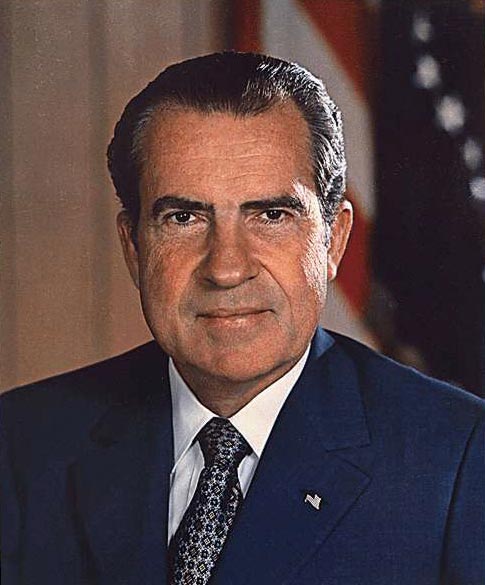 |
|
| 37th United States President « Previous Next » |
|
| In office | Jan. 20, 1969 – Aug. 9, 1974 |
| V. President | Spiro Agnew |
| Political Party | Republican |
| Personal Info | |
| Born | Jan. 9, 1913 |
| Died | Apr. 22, 1994 (at age 81) |
| Religion | Quaker |
| School | Whittier College Duke University |
| Profession | Lawyer |
| Signature | |
| Wife | Pat Ryan (1940–93) |
| Children | Tricia Nixon Cox Julie Nixon Eisenhower |
| U.S. Presidents 36-43 | |
| 36. Lyndon B. Johnson (1963-1969) | |
| 37. Richard Nixon (1969-1974) | |
| 38. Gerald Ford (1974-1977) | |
| 39. Jimmy Carter (1977-1981) | |
| 40. Ronald Reagan (1981-1989) | |
| 41. George H. W. Bush (1989-1993) | |
| 42. Bill Clinton (1993-2001) | |
| 43. George W. Bush (2001-2009) | |
| List of All the Presidents |
Richard Milhous Nixon was the 37th President of the United States of America who was famous as the first U.S. President to resign from office because of his impeachment proceedings the Watergate Scandal.
Early Life
He was born on the 9th of January 1913 as the second child of five siblings between Frank Nixon and Hanna Milhous Nixon. Richard Nixon earned his degree from Whittier College California in 1934 and Duke University Law School in Durham, North Carolina in 1937. He got married in 1940 to Thelma Catherine (“Pat”) Ryan—a teacher and an amateur actress.
He joined the U.S. Navy in August of 1942 after relinquishing his post from the Office of Price Administration in Washington, D. C. He was stationed in the Pacific as an aviation ground officer and rose to the rank of lieutenant commander.
After his military service in 1946, he was elected to the House of Representative and gained the respect of the Republicans by defeating the five-termer Democratic Candidate Jerry Voorhis who was rumored to be a sympathizer for communists. From 1948-1950, he became a member of the House Un-American Activities Committee (HUAAC) and took the primary role as the head of the investigation team that was tasked to investigate Alger Hiss, a former Federal Department official allegedly working as a spy for the Soviet Union. Due to Nixon’s aggressive questioning in the committee proceedings, Alger Hiss was convicted on perjury by denying to the claim of Whittaker Chambers that somewhere in 1937, Hiss has handed him some classified documents that needed to be forwarded over to the Soviet Union. Hiss denied this allegation and was convicted for perjury. Nixon’s show of aggressiveness in the committee proceedings had earned him a reputation among fellow Americans as a dedicated anti-communist.
Nixon’s Slush Fund
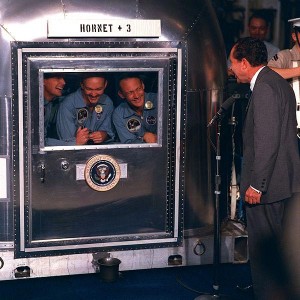 In 1950 Nixon was successfully elected to the Senate and two years later, at the age of 39, he was nominated by the Republicans for the Vice Presidential race under the banner General Dwight Eisenhower running as President. The Republicans had nominated him because of his credentials as a true anti communist and that they think Nixon could gather a huge number of votes from the western side of the country. In the middle of the campaign period “New York Post,” it was discovered that Nixon was having a secret slush fund contributed by the industry lobbyist from the southern side of California. General Eisenhower gives him a chance to clear his name. On September 23, 1952, Nixon delivered his televised speech that was nationally broadcasted. In that speech he acknowledged the existence of the so called slush fund but denied that he was spending the fund in an improper way. To support his claims about proper using of the fund and that he was not making himself rich he documented his family’s financial assets and liabilities in a shameful way stating that his wife was not having a “fur coat” like the wives of other Democratic candidates. In that speech he admitted that he had accepted a present but only a cocker spaniel puppy in which his daughter named “Checker”. This speech earned its name as the Checker Speech in which Nixon considered at first as a failure but the Americans responded in favor of Republican’s Presidential and Vice Presidential candidate during the time of election. The Eisenhower-Nixon party defeated the Democratic candidates in the election of 1952.
In 1950 Nixon was successfully elected to the Senate and two years later, at the age of 39, he was nominated by the Republicans for the Vice Presidential race under the banner General Dwight Eisenhower running as President. The Republicans had nominated him because of his credentials as a true anti communist and that they think Nixon could gather a huge number of votes from the western side of the country. In the middle of the campaign period “New York Post,” it was discovered that Nixon was having a secret slush fund contributed by the industry lobbyist from the southern side of California. General Eisenhower gives him a chance to clear his name. On September 23, 1952, Nixon delivered his televised speech that was nationally broadcasted. In that speech he acknowledged the existence of the so called slush fund but denied that he was spending the fund in an improper way. To support his claims about proper using of the fund and that he was not making himself rich he documented his family’s financial assets and liabilities in a shameful way stating that his wife was not having a “fur coat” like the wives of other Democratic candidates. In that speech he admitted that he had accepted a present but only a cocker spaniel puppy in which his daughter named “Checker”. This speech earned its name as the Checker Speech in which Nixon considered at first as a failure but the Americans responded in favor of Republican’s Presidential and Vice Presidential candidate during the time of election. The Eisenhower-Nixon party defeated the Democratic candidates in the election of 1952.
Nixon as Vice President
In his two terms as Vice President of the United States and when Eisenhower was suffering from serious illnesses, Nixon was tasked to head the cabinet meetings and sessions involving National Security while Eisenhower was incapable of performing his duties. Though he headed these meetings, the power was still in the hands of Eisenhower’s close advisers. Eisenhower then proposed some agreement about power sharing with the office of the Vice President in the case that he was too incapacitated to tend to his duties. During this time he made several visits to other states, including his travel to Latin America where his car has been stoned and spat upon by the anti-American protesters. This protest to Vice President Nixon had been dubbed the “Diplomatic Pearl Harbor”.
He was nominated for the Presidential race of 1960 but lost to John F. Kennedy by a narrow margin. The match-up between Richard Nixon and John F. Kennedy was so famous and well remembered by the Americans due to their televised debates. Although Nixon was performing well in that debate, Kennedy conveyed his energetic and youthful poise which convinced the public that Kennedy was the better man. Because of the narrow margin of votes between the two Presidential candidates, many questioned if Kennedy was really the legitimate winner, as there were some irregularities cited in some states. Many of his friend and fellow Republicans advised him to make some protest but he decided not to do so. Following to his loss to President Kennedy, Nixon returned to his private life in California where he practiced law and launched again his political career running for Governor in the State of California. When he was defeated in this election as well, many believed that his political career was over.
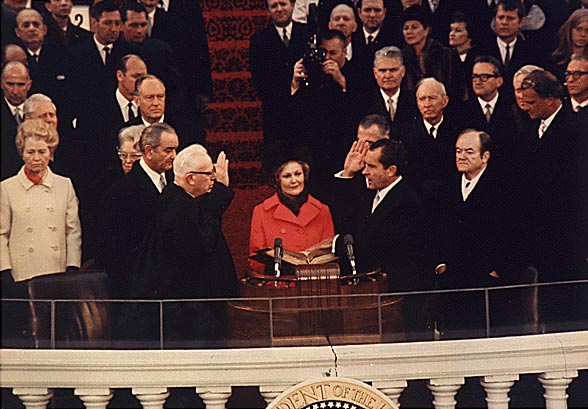 After losing his bid for Governor in his home state, Nixon made a political comeback. In 1968 he again won the nomination of the Republicans for president and defeated Hubert H. Humphrey and other third party candidate George C. Wallace. Nixon won the election by a narrow margin with 31.7 million popular votes against Hubert Humphrey’s 30.9 million. Even though many had criticized Nixon’s presidency, many positive reforms were been made for civil rights, law enforcement, environment and other sectors of the government. His proposal for the Family Assistance Program aimed for the welfare and income of the poor families was defeated by the Senate, but in return it gained support for the passing of some House Bills with similar ideas. In the early part of 1971 his budget proposal contained deficits amounting to billions of dollars, consider to be the largest in American history up to that period.
After losing his bid for Governor in his home state, Nixon made a political comeback. In 1968 he again won the nomination of the Republicans for president and defeated Hubert H. Humphrey and other third party candidate George C. Wallace. Nixon won the election by a narrow margin with 31.7 million popular votes against Hubert Humphrey’s 30.9 million. Even though many had criticized Nixon’s presidency, many positive reforms were been made for civil rights, law enforcement, environment and other sectors of the government. His proposal for the Family Assistance Program aimed for the welfare and income of the poor families was defeated by the Senate, but in return it gained support for the passing of some House Bills with similar ideas. In the early part of 1971 his budget proposal contained deficits amounting to billions of dollars, consider to be the largest in American history up to that period.
The Vietnam War
When the United States and South Vietnam attacked North Vietnam in the spring of 1970, wide protests took place in Kent State University. Soldiers opened fire onto the protesters killing four and wounding nine. Trying to achieve his objective of “peace and honor’ with Vietnam, President Nixon initiated the Vietnamization strategy by pulling out American troops from further participation in the war and at the same time trained the South Vietnamese armed forces to defend for their own. At the same time Nixon recommenced the order of bombing of North Vietnam. In 1973 Nixon advisers agreed on a peace deal with the North Vietnamese Communist Party. The last batch of the American troop was pulled out from the war zone by March of the same year but hostilities in Vietnam still continued. By 1975, North Vietnam invaded the south and reunited the country under the rule of Communism.
Communist Diplomacy
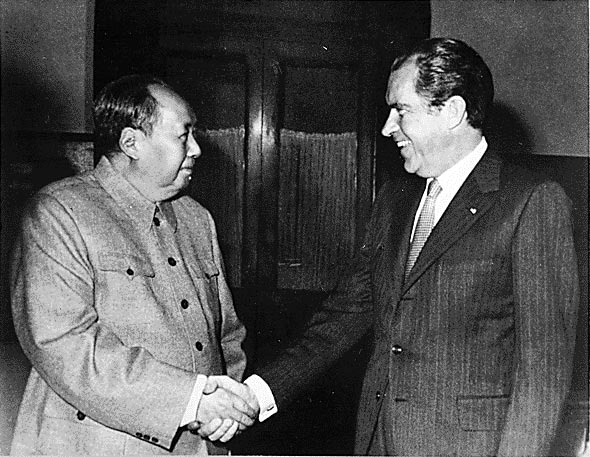 In addition to his achievements in Vietnam War, Nixon made diplomatic visits to China and Soviet Union and was able to cool down the tension between the U.S and the communist countries. The Soviet was more interested to improve its relation with the United States. China on the other hand, conveyed that they were willing to welcome high level of discussions when the trade and travel restrictions were lifted. Nixon then sent his national security adviser Henry Kissinger to China for the secret talks. These discussions led to the resurrection of the good relations between United States and China. Nixon’s visit to China in February-March of 1972 was considered to be the first visit ever done by the American President to China while still in office. His achievement in improving the relations of the United States with communist countries led to the signing of treaties ceasing the production of nuclear weapons. One of these treaties was best known as “SALT” or Strategic Arms Limitation Treaties signed between United States and the Soviet Union.
In addition to his achievements in Vietnam War, Nixon made diplomatic visits to China and Soviet Union and was able to cool down the tension between the U.S and the communist countries. The Soviet was more interested to improve its relation with the United States. China on the other hand, conveyed that they were willing to welcome high level of discussions when the trade and travel restrictions were lifted. Nixon then sent his national security adviser Henry Kissinger to China for the secret talks. These discussions led to the resurrection of the good relations between United States and China. Nixon’s visit to China in February-March of 1972 was considered to be the first visit ever done by the American President to China while still in office. His achievement in improving the relations of the United States with communist countries led to the signing of treaties ceasing the production of nuclear weapons. One of these treaties was best known as “SALT” or Strategic Arms Limitation Treaties signed between United States and the Soviet Union.
Communism in Latin America
Sensing that communism might also spread in the Latin America, specifically in Chile, Nixon’s administration was putting up pressure on the industry of Chile. They limited the access of Chile to the international financial aid. His administration was also very active in destabilizing measures and helping the police and military officials who were against President Salvador Allende of Chile. This resulted to the overthrowing of Allende from power on September 1973.
The Watergate Scandal
In his bid for presidency in 1972, his victory against Democratic candidate George McGovern was considered to be one of the largest victory margins in all of U.S. presidential elections. With a span of just few months after being re-elected as President, his administration was subjected to the investigation regarding the burglary committed by his campaign operatives in the headquarters of Democratic candidates at the Watergate Hotel in Washington D.C. Some of Nixon’s administration officers admitted to the participation in the burglary while Nixon denied his involvement. The burglary was traced back to the committee for his Re-election as president.
The investigation delivered a serious blow to Nixon’s administration when they found out that in 1969, Nixon had installed a voice recording system in the White House and that all presidents’ conversation in the oval office was recorded. Special prosecutor Archibald Cox who was tasked to investigate the burglary of Watergate summoned Nixon to present the tape recordings to the investigation committee. Nixon refused to present the tape but offered to give the transcript of the conversation instead. Cox refused to the offer.
Then in a series of events related to this scandal Nixon instructed his Attorney General Elliot Richardson to remove Cox from office. In response to his instruction, Richardson decided to resign rather than follow Nixon’s order. Richardson’s successor was also fired by Nixon when he also refused to remove Cox from office. Nixon’s intention to remove Cox from office was then finally done by Solicitor General Robert Bork but the district court considered the action to be illegitimate. Following the removal of Cox as special prosecutor for the scandal, calls for impeachment were already taking place but was not yet in progress. Nixon agreed to the designation of Leon Jaworski as special prosecutor to the Watergate scandal and promised not to remove him without the congressional approval, Jaworski succeeded legally in pressuring Nixon to release the first batch of the questioned tapes to the investigation. There was no direct evidence yet implicating Nixon’s involvement in the burglary. By July of 1974, House Judiciary Committee recommended three articles of impeachment on the ground of obstruction of justice, abusive use of power, and refusal to comply with congressional inquiries. On the 5th of August of the same year, Nixon complied to the order of Supreme Court and submitted the transcript of conversation.
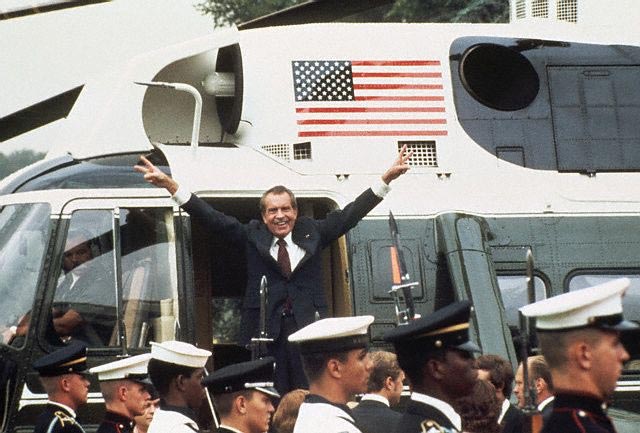 When the transcript of conversations from the tapes was presented in the investigation several of his administration officials resigned from office and some were convicted for an offense. Although Nixon denied his participation in the burglary the conversation tapes yielded some evidence that he tried to divert the investigation. The investigation revealed that Nixon had instructed White House counsel John Dean to make the moves so that the administration’s involvement in the burglary would be concealed. He also prevented the FBI from inquiring about the use of funds paid to the burglars in an attempt to clear his administration from any involvement in the scandal.
When the transcript of conversations from the tapes was presented in the investigation several of his administration officials resigned from office and some were convicted for an offense. Although Nixon denied his participation in the burglary the conversation tapes yielded some evidence that he tried to divert the investigation. The investigation revealed that Nixon had instructed White House counsel John Dean to make the moves so that the administration’s involvement in the burglary would be concealed. He also prevented the FBI from inquiring about the use of funds paid to the burglars in an attempt to clear his administration from any involvement in the scandal.
Knowing that he would face certain impeachment, Nixon announced on August 8, 1974 that he would resign from office on the following day to give way to the “healing process” which was highly needed for the United States of America. Nixon was replaced by Vice President Gerald Ford. Following to his resignation from the White House, Nixon moved to California and later on to New Jersey. His new life was mostly spent writing books. After suffering from a severe stroke he died on April 22, 1994 at the age of 81 in New York City. In the remaining years of his life some Americans admired him as an elder statesman. He was buried at his birthplace beside his wife.